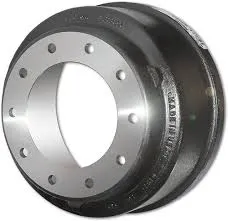drum brake removal
How to Remove Drum Brakes A Step-by-Step Guide
Drum brakes are a common type of brake system used in many vehicles. While they might not be as prevalent as disc brakes in modern cars, many older cars and some trucks still rely on this reliable braking method. If you're a car enthusiast or just looking to perform some routine maintenance, learning how to remove drum brakes is an invaluable skill. In this article, we will walk you through the process of removing drum brakes step by step.
Tools and Materials Needed
Before you start, it’s important to have the right tools at your disposal. Here’s a list of what you will need
- A jack and jack stands - A lug wrench - A brake drum removal tool (if necessary) - A flathead screwdriver - A socket set - A pair of pliers - Brake cleaner - Safety glasses and gloves
Step 1 Prepare the Vehicle
Start by ensuring that the vehicle is parked on a flat surface and engage the parking brake for added safety. Loosen the lug nuts on the rear wheels slightly while the wheel is still on the ground. This will make it easier to remove the wheel once the vehicle is lifted.
Step 2 Lift the Vehicle
Using the jack, lift the rear of the vehicle and secure it with jack stands. Ensure the vehicle is stable before proceeding. Once it's secure, remove the lug nuts completely and take off the wheel to expose the drum brake assembly.
Step 3 Inspect the Drum
Before removing the drum, inspect it for any visible signs of damage or wear. You need to ensure that the drum and the brake shoes are in reasonable condition, as this might affect your repair or replacement process.
Step 4 Remove the Brake Drum
If the drum is not coming off easily, it may be stuck due to rust or debris. Use a brake drum puller if necessary to remove it. If you are using a typical flathead screwdriver, gently pry around the edge to loosen it. Be cautious not to damage the drum in the process.
Step 5 Detach the Brake Shoes and Components
drum brake removal

With the drum removed, you will now have access to the brake shoes and the associated components. Take note of how everything is assembled; it might be helpful to take pictures for reference during reassembly. Remove the retaining springs, adjuster, and any other components holding the brake shoes in place. A pair of pliers can help with this step.
Step 6 Remove the Brake Shoes
Once the components are removed, carefully take out the brake shoes. Pay attention to their orientation as you’ll want to install the new shoes in the same configuration, or if you're just reassembling, you'll place the old shoes back.
Step 7 Clean the Components
Before installing new shoes or reassembling the brake system, it’s wise to clean all components using brake cleaner. This step helps remove brake dust and debris that can affect braking performance. Ensure that all surfaces are properly dried before proceeding.
Step 8 Reassemble the Brake System
Install the new or cleaned brake shoes, making sure they are oriented correctly. Reattach the springs and adjuster mechanism, ensuring that everything clicks into place securely.
Step 9 Reinstall the Brake Drum
Once the shoes are securely in place, carefully reinstall the brake drum. Ensure it spins freely and is properly seated.
Step 10 Finish Up
Reattach the wheel, tighten the lug nuts by hand, and carefully lower the vehicle. Once the vehicle is back on the ground, use the lug wrench to securely tighten the lug nuts in a crisscross pattern to ensure even pressure.
Conclusion
Removing drum brakes may seem daunting, but with the right tools and a little bit of patience, it can be accomplished successfully. Always remember to follow safety procedures and guidelines. If at any point you’re unsure or uncomfortable, don’t hesitate to consult a professional mechanic. Happy braking!
-
The Power and Reliability of Brake DrumsAktualnościAug.27,2025
-
The High-Quality Truck Brake DrumsAktualnościAug.27,2025
-
Quality Brake Drums for Reliable PerformanceAktualnościAug.27,2025
-
Get the Quality Semi Trailer Brake Drums for Your FleetAktualnościAug.27,2025
-
Everything You Need to Know About Brake DrumsAktualnościAug.27,2025
-
Enhance Your Vehicle's Performance with Reliable Brake DrumsAktualnościAug.27,2025
-
Truck Drum Brake Spring Replacement ProcedureAktualnościAug.22,2025


